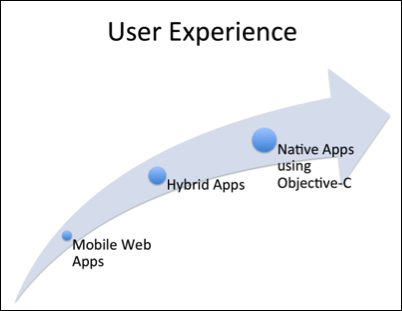To develop iOS applications, there are various third-party frameworks available, apart from Apple libraries. If we broadly categorize the ways in which we can create iOS applications, we can divide them into three ways.
This is the most standard way to build your application, by interacting with Apple APIs and writing apps in Objective-C. Applications made using native Apple APIs can use all possible device capabilities, and are relatively more reliable and high performing (however, the topic of performance is debatable based on the quality of the developer's code).
Mobile web applications are simple web applications extended for mobile web browsers, which can be created using standard web technologies such as HTML5. For example, if we browse through http://www.twitter.com in a mobile browser, it will be redirected to http://mobile.twitter.com, which renders its corresponding views for mobile devices. These applications are easy to create but the downside is that they have limited access to user data (for example, phonebook) and hardware (for example, camera).
These applications are somewhere in between mobile web apps and native applications. They are created using common web technologies such as HTML5 and JavaScript and have the ability to use device capabilities via their homegrown APIs. Some of the popular hybrid frameworks include Rhomobile and Phonegap.
If we compare the speed of development and user experience, it can be summed up with the following diagrams:


From the preceding diagrams we see that mobile web apps can be created very quickly but we have to compromise on user experience. While native apps using Objective-C have good user experience, they have a very steep initial learning curve for web developers.
RubyMotion is good news for both users and developers. Users get an amazing experience of a native application and developers are able to develop applications rapidly in comparison to applications developed using Objective-C. Let's now learn about RubyMotion.



